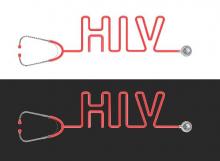Expanding HIV preexposure prophylaxis to cover people who inject drugs would reduce their disease burden by averting an estimated 26,700 new HIV infections every year, and would also benefit the health of the entire population, according to a cost-effectiveness analysis published online April 25 in Annals of Internal Medicine.
However, such a program would be very expensive, chiefly because of the high current cost of combination tenofovir-emtricitabine therapy, which is approximately $10,000 per patient per year. The overall expense would be higher than is generally considered cost-effective, both in absolute terms and in the cost per quality-adjusted life year (QALY) gained, said Cora L. Bernard of the department of management science and engineering, Stanford (Calif.) University, and her associates.
The investigators used a computer model to analyze the cost-effectiveness of a program offering this segment of the population daily oral tenofovir-emtricitabine plus HIV screening, assessment of adverse effects every 3 months, and antiretroviral treatment (ART) if HIV developed. It assumed that 25% of this group would follow such a program. The model incorporated the results of recent clinical trials along with epidemiologic and economic data such as the incidence of the infection in the approximately 0.56% of the U.S. adult population who use injectable drugs, the effectiveness of prevention programs in such populations, and the costs of treatment according to HIV stage and ART status. The model projected relative benefits and costs over the next 20 years.
Preexposure prophylaxis would prevent an estimated 26,700 new HIV infections among people who use injectable drugs each year, gaining 173,000 QALYs. However, the overall cost over the course of 20 years would be $44 billion, which is the equivalent of spending 10% of the total federal budget for domestic HIV-AIDS on just this small segment of the population. The cost per QALY would be $253,000, well above the generally accepted threshold for cost-effectiveness, the investigators said (Ann Intern Med. 2016 April 25. doi: 10.736/M15-2634).
If the eventual release of a generic version of tenofovir-emtricitabine reduced the price of treatment by 65%, this type of preexposure prophylaxis would cost a projected $100,000 per QALY gained. However, “cost-effectiveness is only one of many considerations for policymakers, who must also evaluate the ethical dimensions of [a national] HIV-prevention program for a population with generally low access to health services,” Ms. Bernard and her associates said.
The National Institute on Drug Abuse, Stanford University, the National Science Foundation, the U.S. Department of Veterans Affairs, and the National Institute on Aging funded the study. Ms. Bernard and her associates reported having no relevant disclosures.


